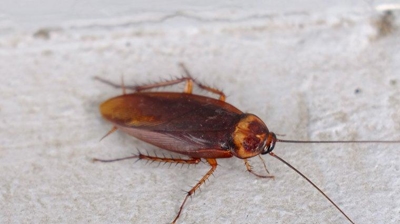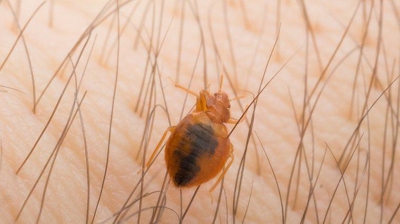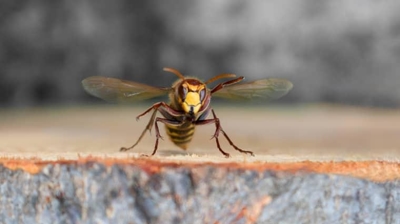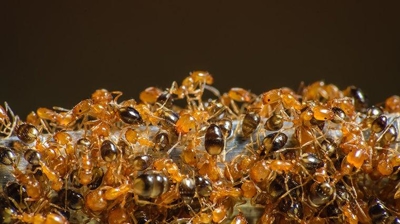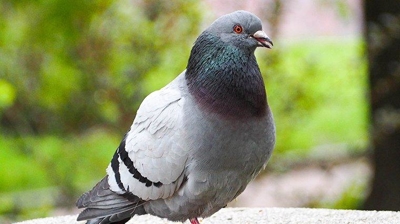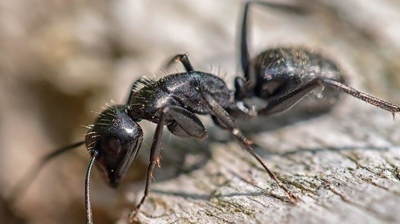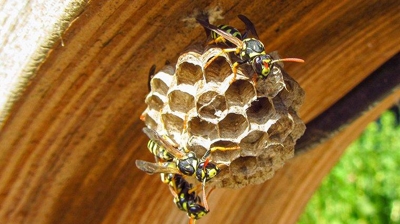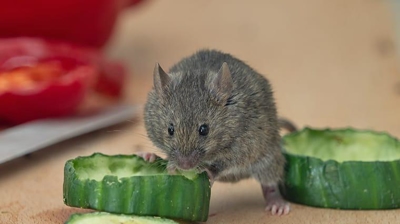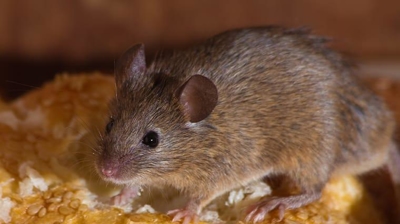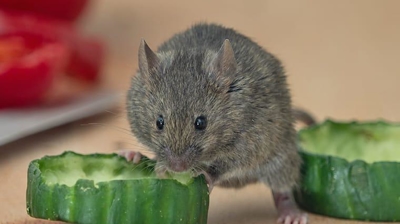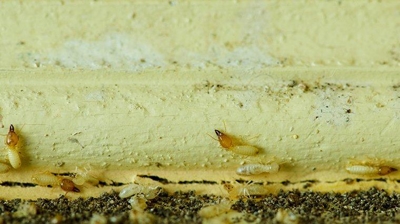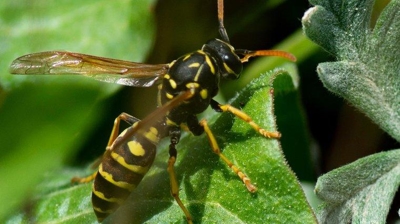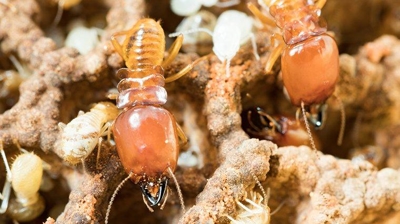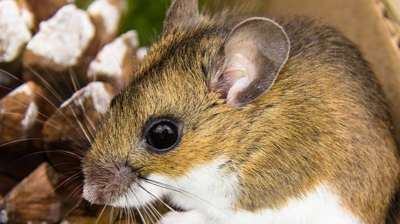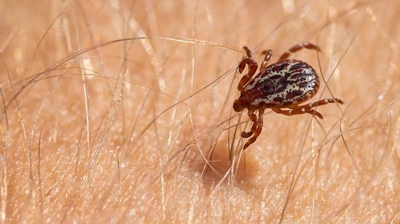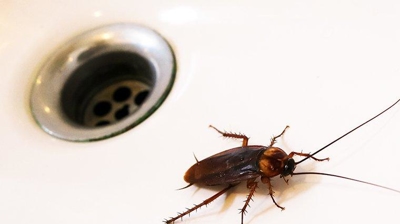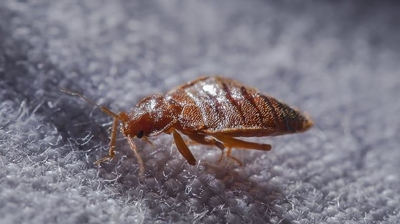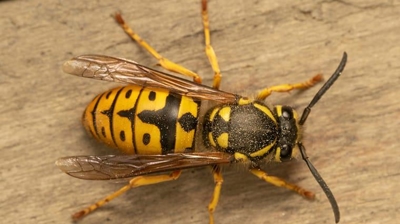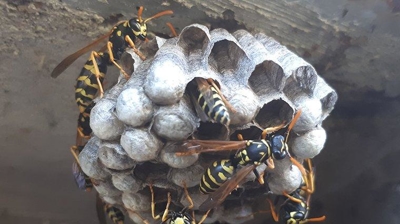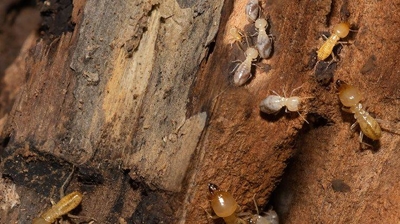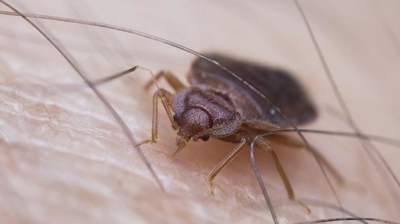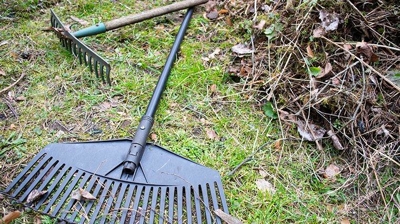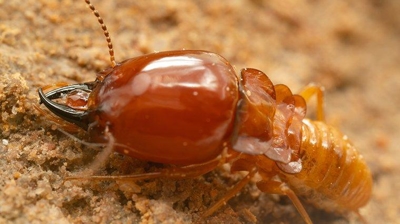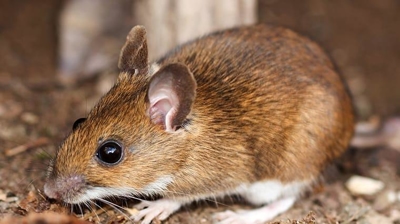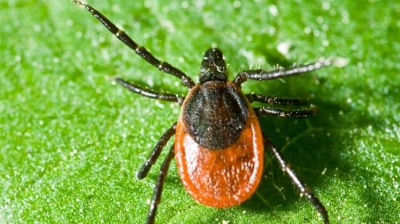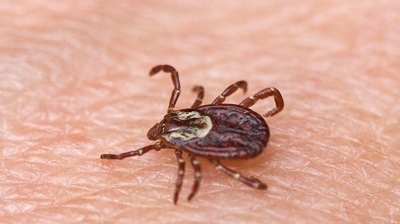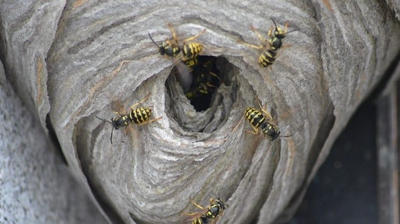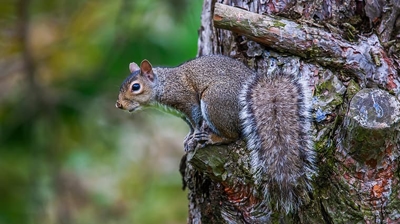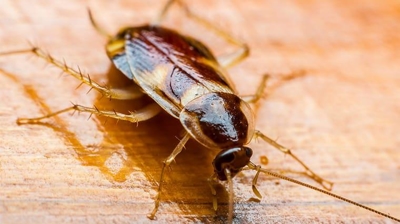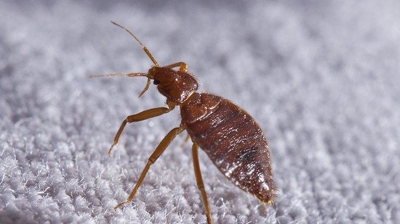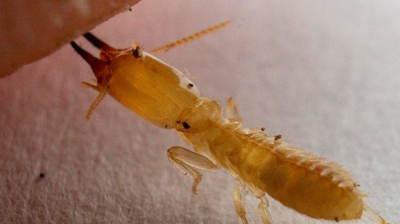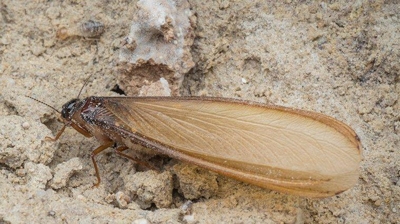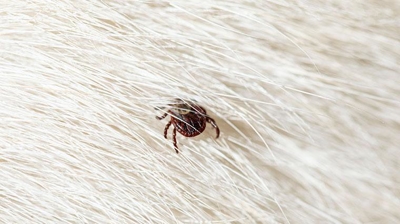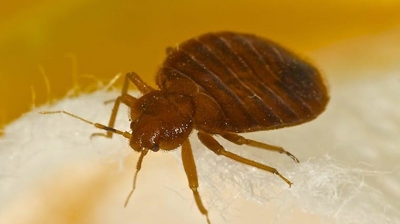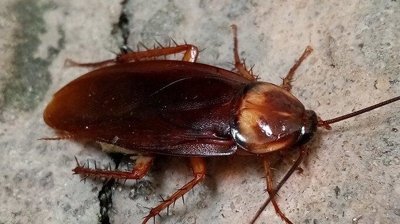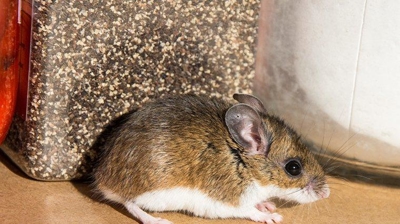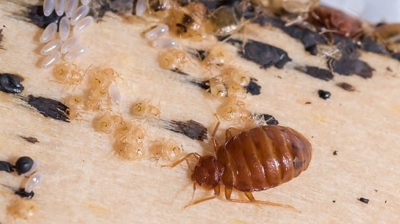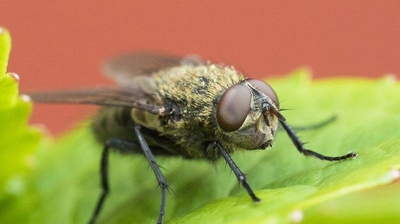
Whited-Footed Mice Identification Guide
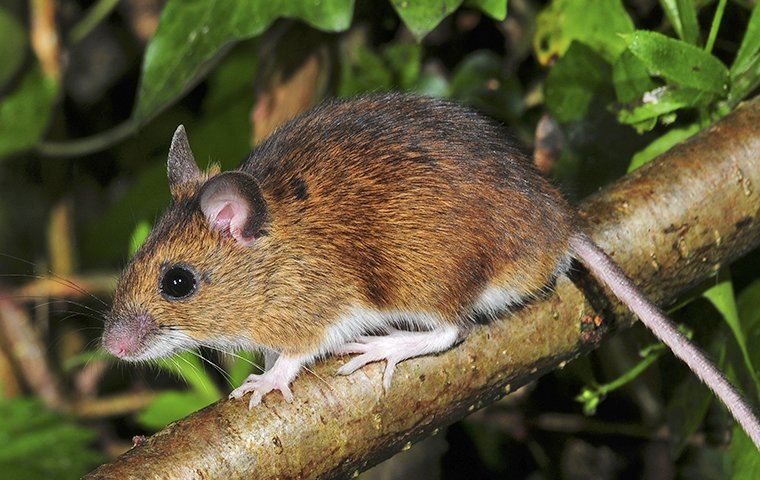
What are white-footed mice?
White-footed mice (also known as wood mice) are a common rodent found in most of Canada and the northeastern United States. These mice are named for their white feet which contrast with their dark gray coat. They are very small, only 3.5-4 inches long not including the length of the tail, which is often as long as the rest of the mouse’s body.
White-footed mice in New Haven are timid and generally avoid humans. In the wild, they are omnivorous, eating seeds as well as insects they’ve found. However, in your home, they’ll feast on any leftover food they can find.
Are white-footed mice dangerous?
Like all rodents, mice can be host to a number of harmful diseases, and the presence of biological elements like their droppings, urine, and fur can lead to conditions that spread disease or cause allergic reactions in some people.
Notably, like its cousin the deer mouse, a white-footed mouse can carry hantaviruses that are very harmful and even fatal to humans, including hantavirus hemorrhagic fever with renal syndrome, hantavirus pulmonary syndrome, and hantavirus cardiopulmonary syndrome. White-footed mice are also known to transmit Lyme disease.
Why do I have a mouse problem?
Like most rodents, white-footed mice are nocturnal and avoid other animals, so you probably won’t see one with your naked eye, but that doesn’t mean you don’t have an infestation on your hands.
In the wild, white-footed mice generally live in burrows they created or inside the abandoned burrows of other animals. These burros are typically underground, beneath rocks, in stumps, in soil cracks, or in a number of other secluded locations. However, these rodents get pushed indoors, especially in colder months of the year. Your home provides a warm place to nest with an ample supply of food and water sources that the mice need to survive.
Like all animals, rodents need food and water to survive. If you have left out food, have open garbage cans, or nave unresolved moisture issues, don’t be surprised if you end up attracting mice in the process.
Where are White-footed mice commonly found?
In the wild, white-footed mice are commonly found in the roots of trees and shrubs, beneath logs and boards, or in tunnels created by other animals. They may also nest in hollow trees, inside equipment or toys left in the yard, inside wood or compost piles, inside fence posts, and inside old bird or squirrel nests.
Indoors, they often find their way into cabinet voids and unused furniture, as well as anywhere with heavy moisture present, such as in attics, cellars, garages, or crawl spaces.
How can I prevent White-footed mice from getting into my home?
White-footed mice will find their way inside your home in spite of your best efforts. However, here are some tips to keep them at bay.
- Keep your home clean and vacuum regularly.
- Fix any leaking pipes or other humidity problems in the home.
- Keep garbage stored outdoors in sealed containers.
- Keep food in sealed containers and refrigerated if possible, including pet food.
- Keep your yard free of clutter that mice could use to nest.
- Install metal screens on windows, doors, and on any exterior vents.
- Inspect your home’s exterior for any holes and seal any you find.
- Place weatherstripping under doors and windows.
- Seal holes where wires, cables, or pipes enter the house.
- Cut back shrubs and trees so that they are well away from the exterior of the home.
- Trim the bottom of hedges or bushes to expose rodent harborage areas.
- Remove bird feeders from your property if possible.
How do I get rid of white-footed mice?
Mice are difficult household pests to treat for the average homeowner. Traditional traps may not be completely effective. It's also challenging to clean up after a rodent infestation. If you sweep or vacuum around their activity areas without first completely eliminating the mice present, you could end up simply relocating them to a different part of the home.
Don’t fight mice in your home alone: trust your problem to the rodent exclusion experts at Connecticut Pest Elimination, Inc. We’ll take care of any mice problems you may be facing, eliminate the problem completely, and bring you back the safety and peace of mind that comes with knowing your home is rodent-free.

-
“Professional Service”
“- Satisfied CustomerAndrew was very knowledgeable and took the time to answer my questions and make sure I understood everything he was doing and why.
” -
“Highly Recommend!”
“The tech was fabulous. He called me before he arrived and let me know when he was outside the yard.”- Kathryn S. -
“Amazing Service!”
“Our Service from Drew was punctual, professional, honest, and polite!!”- Gretel M. -
“A+ Experience”
“Excellent follow-through!”- Tamara S. -
“10/10 Recommend!”
“Sean from CT Pest Solutions was absolutely amazing. He was kind, professional, helpful, and most importantly resolved our issue.”- Samantha T. -
“Great Work!”
“Tom was very thorough, and professional, and answered any questions I had.”- Nikki G.
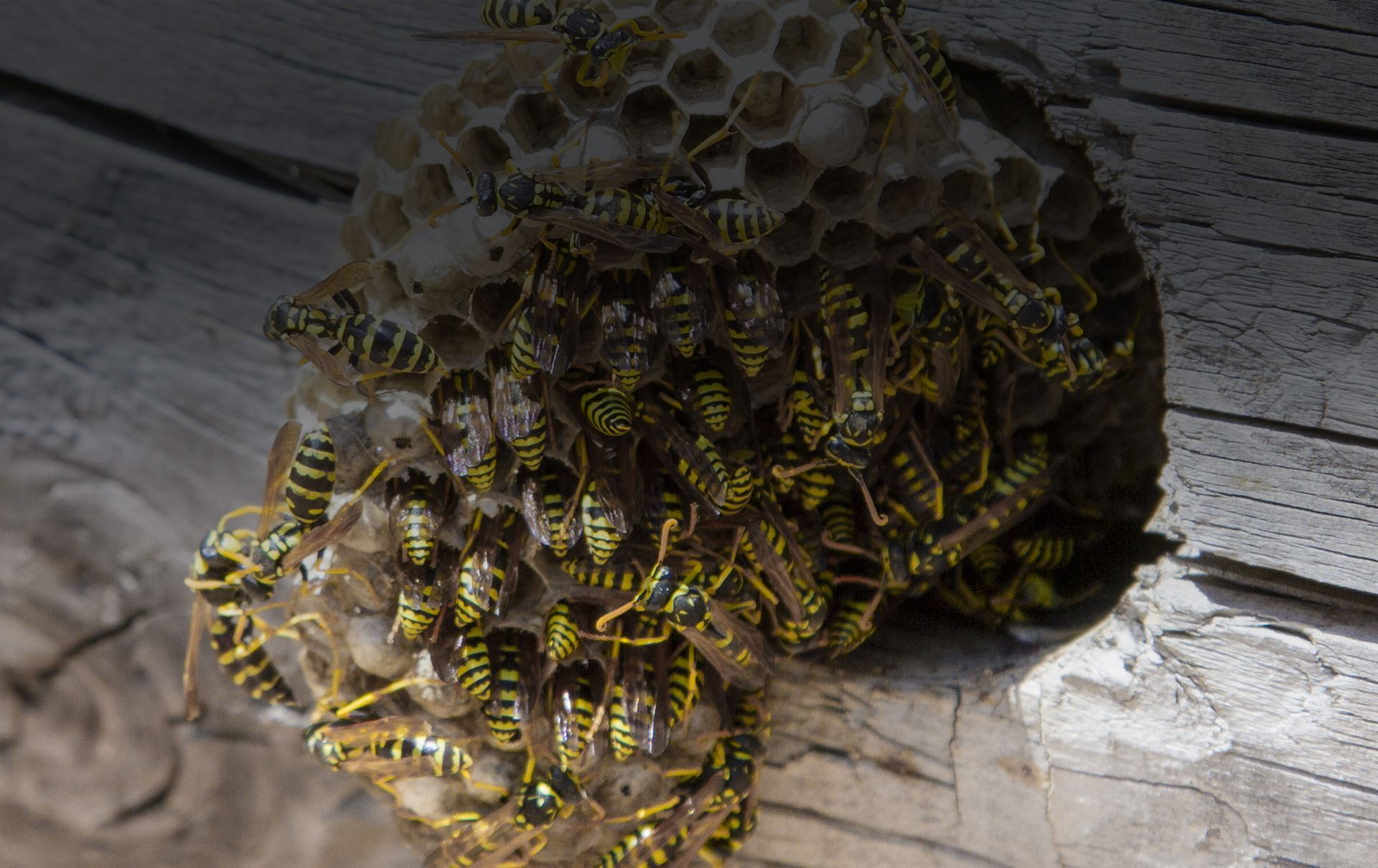
Stay in the Know!
Read Our Latest Blog Posts
-
 How Does The Cooler Weather Affect Pest Control In New Haven?Read More
How Does The Cooler Weather Affect Pest Control In New Haven?Read More -
 Why Carpenter Ants Invade New Haven HomesRead More
Why Carpenter Ants Invade New Haven HomesRead More -
 Has Wildlife Found Its Way Onto Your New Haven Property?Read More
Has Wildlife Found Its Way Onto Your New Haven Property?Read More -
 Everything New Haven Homeowners Need To Know About German CockroachesRead More
Everything New Haven Homeowners Need To Know About German CockroachesRead More -
 What New Haven Property Owners Ought To Know About Yellow Jacket ControlRead More
What New Haven Property Owners Ought To Know About Yellow Jacket ControlRead More -
 Carpenter Ants: What You Should Know And Why You Should CareRead More
Carpenter Ants: What You Should Know And Why You Should CareRead More -
 How To Keep The Nuisance Wildlife In New Haven At BayRead More
How To Keep The Nuisance Wildlife In New Haven At BayRead More -
 A Practical Guide To Carpenter Ant Control In New HavenRead More
A Practical Guide To Carpenter Ant Control In New HavenRead More -
 The Problems Wildlife Can Bring to New Haven PropertiesRead More
The Problems Wildlife Can Bring to New Haven PropertiesRead More -
 The Dangers Cockroaches Bring To New Haven HomesRead More
The Dangers Cockroaches Bring To New Haven HomesRead More -
 Carpenter Ants In New Haven Can Be A Real Problem For HomeownersRead More
Carpenter Ants In New Haven Can Be A Real Problem For HomeownersRead More -
 Commonly Told Myths About Bed Bugs In New HavenRead More
Commonly Told Myths About Bed Bugs In New HavenRead More -
 Hornet Infestations: The Dangers And How To Prevent Them In New HavenRead More
Hornet Infestations: The Dangers And How To Prevent Them In New HavenRead More -
 A Practical Guide To Dealing With Pharaoh Ants In New HavenRead More
A Practical Guide To Dealing With Pharaoh Ants In New HavenRead More -
 A Handy Guide To Wildlife Control For New Haven Property OwnersRead More
A Handy Guide To Wildlife Control For New Haven Property OwnersRead More -
 The Easiest Way To Get Rid Of Rodents In Your New Haven HomeRead More
The Easiest Way To Get Rid Of Rodents In Your New Haven HomeRead More -
 How Can I Tell If My New Haven Home Has Carpenter Ants?Read More
How Can I Tell If My New Haven Home Has Carpenter Ants?Read More -
 How To Keep Problematic Wasps Away From Your New Haven PropertyRead More
How To Keep Problematic Wasps Away From Your New Haven PropertyRead More -
 All You Need To Know About Bed BugsRead More
All You Need To Know About Bed BugsRead More -
 How A Tiny Mouse Can Cause Big Problems In Your New Haven HomeRead More
How A Tiny Mouse Can Cause Big Problems In Your New Haven HomeRead More -
 The Secret To Keeping Mice Out Of Your New Haven HomeRead More
The Secret To Keeping Mice Out Of Your New Haven HomeRead More -
 How To Easily Deter Nuisance Wildlife In New HavenRead More
How To Easily Deter Nuisance Wildlife In New HavenRead More -
 How To Protect Your New Haven Property From TermitesRead More
How To Protect Your New Haven Property From TermitesRead More -
 Are Cockroaches Invading Your Space?Read More
Are Cockroaches Invading Your Space?Read More -
 Tips To Avoid Thanksgiving Rodent Problems In StamfordRead More
Tips To Avoid Thanksgiving Rodent Problems In StamfordRead More -
 Mice And Rats In Connecticut: How Do I Prevent Them?Read More
Mice And Rats In Connecticut: How Do I Prevent Them?Read More -
 How To Spot Signs Of Termite Activity Around Your New Haven PropertyRead More
How To Spot Signs Of Termite Activity Around Your New Haven PropertyRead More -
 How To Keep Dangerous Wasps Out Of Your New Haven YardRead More
How To Keep Dangerous Wasps Out Of Your New Haven YardRead More -
 Help! I Am Struggling With A Termite Infestation In New HavenRead More
Help! I Am Struggling With A Termite Infestation In New HavenRead More -
 Rodent Rundown: Keeping These Dangerous Pests Away From Your New Haven PropertyRead More
Rodent Rundown: Keeping These Dangerous Pests Away From Your New Haven PropertyRead More -
 The Easiest Way To Get Rid Of Ticks Around Your New Haven PropertyRead More
The Easiest Way To Get Rid Of Ticks Around Your New Haven PropertyRead More -
 Winter Pest Outlook For New Haven ResidentsRead More
Winter Pest Outlook For New Haven ResidentsRead More -
 How Dangerous Are Wasps In New Haven, CT?Read More
How Dangerous Are Wasps In New Haven, CT?Read More -
 New Haven's Complete Guide To Bed Bug IdentificationRead More
New Haven's Complete Guide To Bed Bug IdentificationRead More -
 Don't Let Stinging Insects Ruin Your Fourth Of July!Read More
Don't Let Stinging Insects Ruin Your Fourth Of July!Read More -
 Mice Can Bring More Than Just A Headache To Your New Haven HomeRead More
Mice Can Bring More Than Just A Headache To Your New Haven HomeRead More -
 A Helpful Guide To Paper Wasp ControlRead More
A Helpful Guide To Paper Wasp ControlRead More -
 How To Identify And Get Rid Of Termites In Your New Haven HomeRead More
How To Identify And Get Rid Of Termites In Your New Haven HomeRead More -
 Why Are There Bed Bugs In My New Haven Home?Read More
Why Are There Bed Bugs In My New Haven Home?Read More -
 Spring Pest Prevention 101: What Every New Haven Homeowner Needs To KnowRead More
Spring Pest Prevention 101: What Every New Haven Homeowner Needs To KnowRead More -
 How To Keep Termites Away From Your New Haven HomeRead More
How To Keep Termites Away From Your New Haven HomeRead More -
 The Truth About RodentsRead More
The Truth About RodentsRead More -
 How To Deal With Ticks When You're OutsideRead More
How To Deal With Ticks When You're OutsideRead More -
 What Everyone In New Haven Ought To Know About TicksRead More
What Everyone In New Haven Ought To Know About TicksRead More -
 Stinging Insects: The Do's And Don'tsRead More
Stinging Insects: The Do's And Don'tsRead More -
 Dealing With Nuisance Wildlife: Effective Strategies For Control And Prevention In New HavenRead More
Dealing With Nuisance Wildlife: Effective Strategies For Control And Prevention In New HavenRead More -
 Are Brown-Banded Cockroaches In New Haven Dangerous?Read More
Are Brown-Banded Cockroaches In New Haven Dangerous?Read More -
 How To Completely Eliminate A Cockroach Infestation In Your New Haven HomeRead More
How To Completely Eliminate A Cockroach Infestation In Your New Haven HomeRead More -
 Don't Let Stinging Insects Ruin Your Backyard Activities In New HavenRead More
Don't Let Stinging Insects Ruin Your Backyard Activities In New HavenRead More -
 Tick Prevention Tips Every New Haven Pet Owner Should KnowRead More
Tick Prevention Tips Every New Haven Pet Owner Should KnowRead More -
 Don't Forget About Pest Control During The Winter Season In New HavenRead More
Don't Forget About Pest Control During The Winter Season In New HavenRead More -
 How To Stop Bed Bug Infestations Before They Even Begin In New HavenRead More
How To Stop Bed Bug Infestations Before They Even Begin In New HavenRead More -
 What You Should Know About Termite Season In New HavenRead More
What You Should Know About Termite Season In New HavenRead More -
 Termite Season Is Upon Us In New HavenRead More
Termite Season Is Upon Us In New HavenRead More -
 Protect Yourself & Those You Love From Ticks In New Haven, CTRead More
Protect Yourself & Those You Love From Ticks In New Haven, CTRead More -
 Top Ten Bed Bug Myths, DebunkedRead More
Top Ten Bed Bug Myths, DebunkedRead More -
 New Haven’s Step-By-Step Guide to Cockroach ControlRead More
New Haven’s Step-By-Step Guide to Cockroach ControlRead More -
 A Guide To Effective Wildlife Control In New HavenRead More
A Guide To Effective Wildlife Control In New HavenRead More -
 New Haven’s Complete Guide To Effective Rodent ControlRead More
New Haven’s Complete Guide To Effective Rodent ControlRead More -
 Beating Bed Bugs In New Haven: Strategies For Swift And Effective TreatmentRead More
Beating Bed Bugs In New Haven: Strategies For Swift And Effective TreatmentRead More -
 Protecting Your New Haven Property From Winter PestsRead More
Protecting Your New Haven Property From Winter PestsRead More









